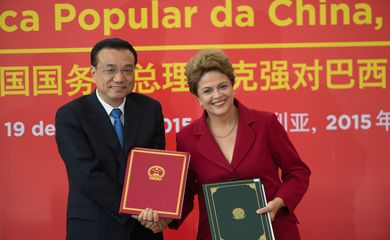Study on viability of bi-oceanic railway ready by 2016


The Bi-oceanic Railway aims to connect Brazil's Central-West and North to Peru

Planning Minister Nelson Barbosa said on Wednesday (Jun 10) that the construction of the Bi-oceanic Railway, which is to connect Brazil's Central-West and North to Peru, may be piecemeal. In the minister's view, the project is worth getting off the ground even if only the Brazilian stretch up to Porto Velho, in Rondônia state, is built—which is to facilitate the transportation of agricultural goods along the Madeira River (a tributary to the Amazonas River) and bring about infrastructure improvements for the transportation of grains.
The Bi-oceanic Railway may be built stage by stage, starting with the most commercially viable sections, Barbosa explained during a hearing at the Federal Senate.
The project was reiterated by the government and construction works are expected to start under the new phase of the Program for Investment in Logistics, announced on Tuesday (Jun 9) by President Dilma Rousseff. The minister said that a large number of details necessary to build the 3.5km railway are still pending, as the research conducted by Chinese companies is still in progress and should be ready by May 2016.
“It is a railway of both economic and strategic importance. That's why it's been the object of deals between three governments. We're creating a route for conveying Brazilian agricultural products through the Pacific Ocean, with no need to reach the Panama Canal. The construction will be piecemeal and should take a while. The goal is to have works started by 2018, after the studies are concluded and analyzed. It'll obviously take more than four years to be finished,” Nelson Barbosa added.
The minister highlighted that an attractive yield is necessary to stimulate private investment in the concessions, which would nonetheless keep costs at an affordable level for customers. According to him, the government wants to use the Program for Investment in Logistics as an opportunity to turn demand into investment. For this reason, the dialogue with governors will be strengthened in a bid to identify the infrastructure needs of every region, Barbosa explained.
The construction of the railway was the object of 35 agreements signed by Brazil and China during Prime Minister Li Keqiang's visit to the South American country on May 19 this year. The deals are part of China and Brazil's cooperation plan, made to last until 2021.
On the occasion, President Dilma Rousseff said that the railway “is the carving of a new path to Asia, shortening distances and cutting spending—a new path which will take us directly to the Pacific Ocean, all the way to the ports of China.”
Translated by Fabrício Ferreira
Fonte: Study on viability of bi-oceanic railway ready by 2016





